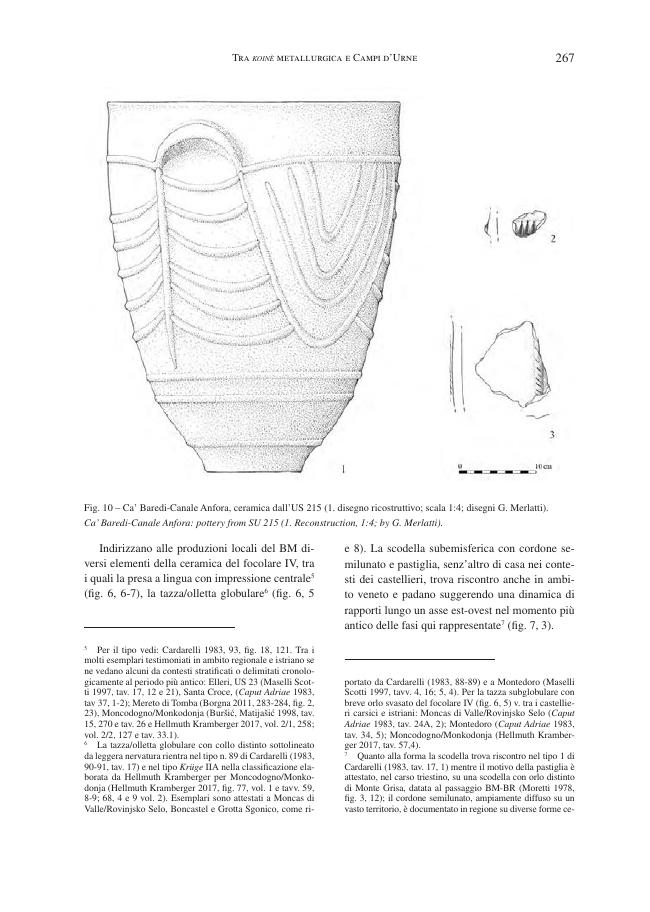Tra koinè metallurgica e Campi d'Urne : il ruolo dei castellieri e degli approdi friulani tra Europa continentale e Mediterraneo dal Bronzo medio-recente al Bronzo finale
P. 259-274
The northern Adriatic regions are supposed to have played an important role in the interregional exchange and interaction dynamics concerning both the transmission of cultural patterns and the diffusion of strategic resources, such as Alpine metal towards Italy and southern Adriatic. The inception of a research project focusing on the protohistory of the eastern low plain of Friuli and in particular on the Bronze Age site of Ca' Baredi/Canale Anfora near Aquileia permits us to face the theme of interregional relationships from the perspective of a coastal site, which is supposed to have functioned as a harbour of the “castellieri” of Caput Adriae. In this contribution we analyze the pottery of two closed deposits – a hearth and a pit filled with material for re-cycling –, dating respectively to the beginning and to an advanced phase of the Italian RBA 1 (Bz D).
The analysis seems to demonstrate that at the MBA/RBA transition the coastal area of eastern Friuli was taking part in a cultural environment centred on the Isonzo basin and including a group of villages connected through the Slovenian valleys to the Croatian Virovitica. At the beginning of the RBA international relationships are supposed to have strengthened and expanded in particular as regards the maritime Adriatic environment including some Subappennine cultural contexts. Participation in the metallurgical koine was only partially prevented by a phenomenon of settlement discontinuity that implied population dispersal and prompted the diffusion of early Urnfield cultural elements. [Publisher's text]
Fait partie de
Rivista di scienze preistoriche : LXX, supplemento, 2020-
Articles du même numéro (disponibles individuellement)
-
Informations
Code DOI : 10.32097/1130
ISSN: 2282-457X



